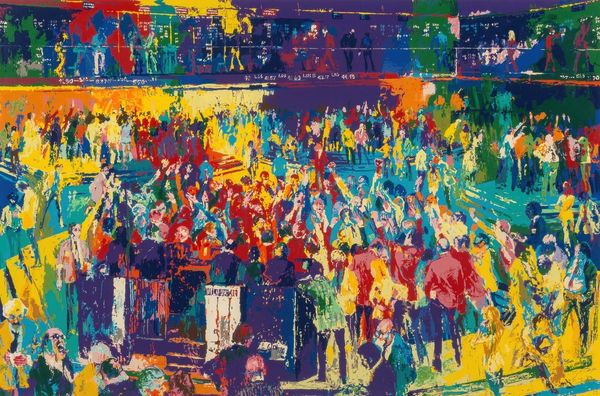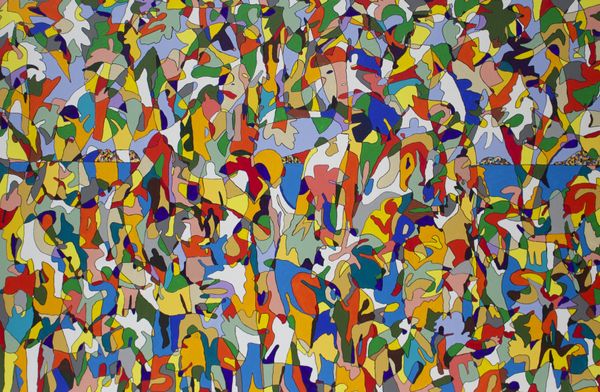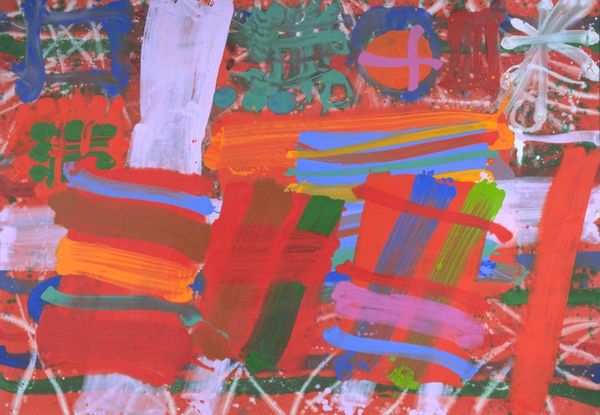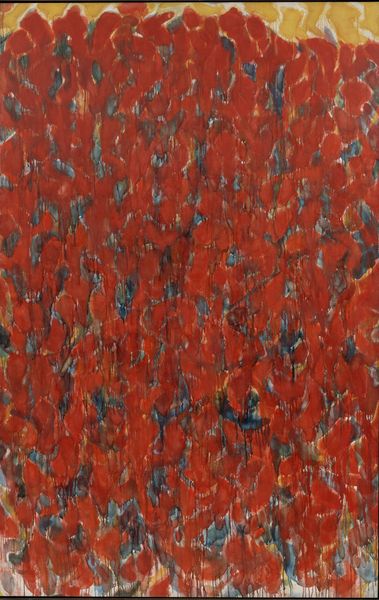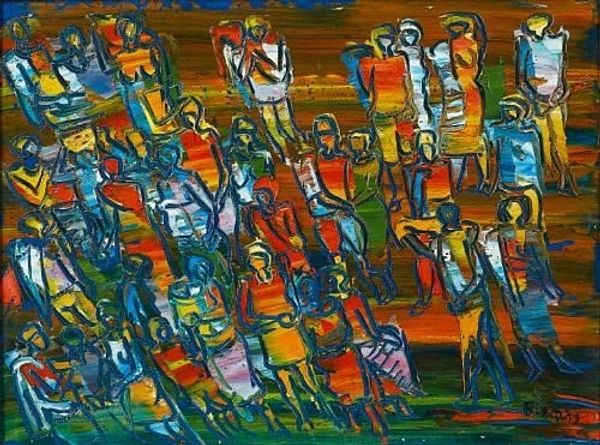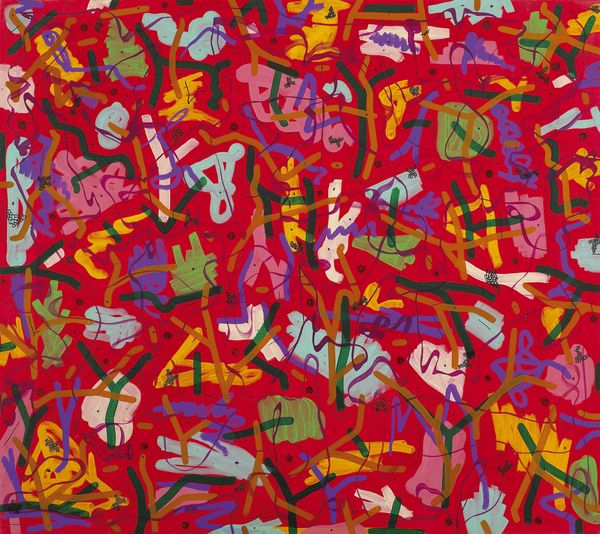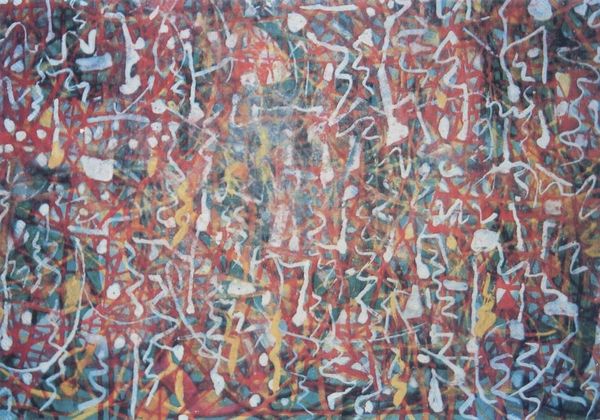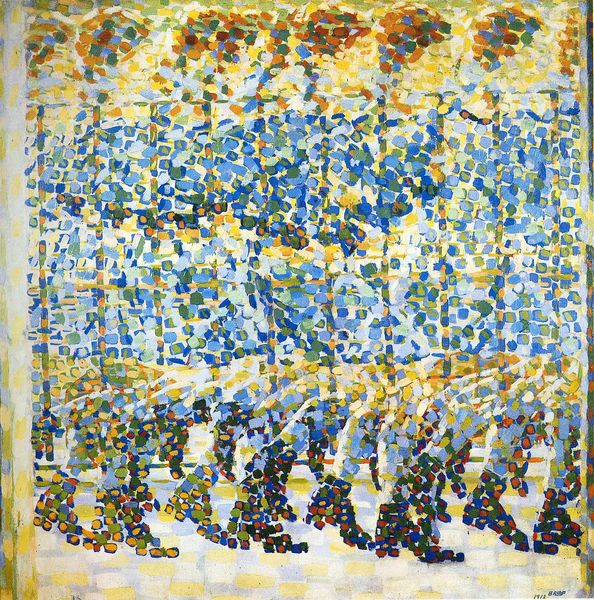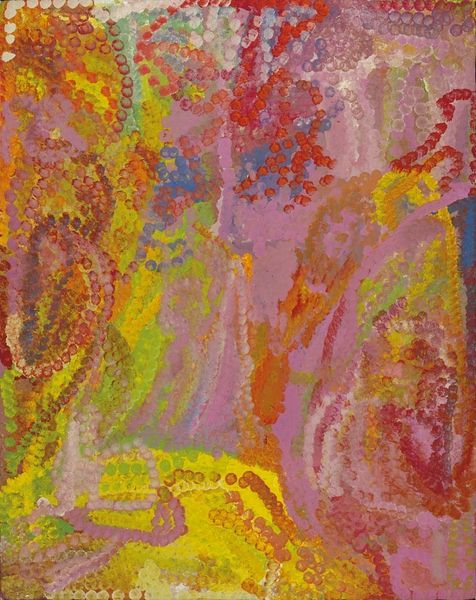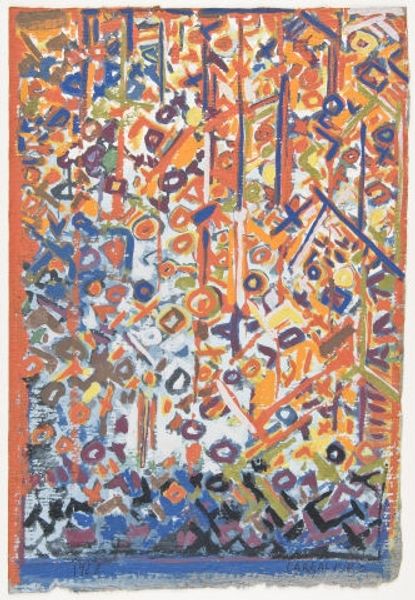
painting
#
abstract expressionism
#
painting
#
figuration
#
geometric pattern
#
abstract pattern
#
organic pattern
#
pattern repetition
#
modernism
Copyright: Walter Battiss,Fair Use
Curator: Walter Battiss’s “Beautiful People” offers us a fascinating confluence of figuration and abstraction, executed in acrylic paint. What strikes you initially about its visual construction? Editor: My first impression is one of frenetic energy. The repeated figures, rendered in bold strokes of red and yellow against that solid blue, create a visual rhythm—almost a textile-like pattern. There's an implied mass production in those gestures too. Curator: Indeed. The all-over composition minimizes a focal point, inviting the eye to traverse the entire surface. One can detect echoes of Pattern and Decoration within its deployment of recurring motifs, and faint glimmers of abstract expressionism with the way the figures meld into one continuous structure. The choice of rendering human forms, however abstracted, is a conscious departure from pure geometric formalism. Editor: It seems Battiss is consciously rejecting the distinction between fine art and decorative craft by embracing repetitive patterning traditionally found in textiles or wallpaper, as it questions the societal constructs of high versus low art and labor. It even gestures toward commodification. Is he perhaps addressing the consumerism inherent in how we perceive identity, even beauty? Curator: Perhaps. What is compelling here is not simply *what* is represented—the repeated figure—but rather *how* it is represented: through the gestural application of paint and strategic chromatic decisions. Semiotically, red is passion, yellow is warmth, while blue, perhaps, stands for distance, which might serve as the key to unlock the painting's essence. Editor: I also read a sense of labor into the execution of this pattern, as well as that vibrant palette – which speaks of acrylic’s role in mid-century artmaking: think cheap, versatile material, quick drying time encouraging spontaneous execution, accessible colors for any artist willing to embrace it as a populist vehicle. Curator: Considering Battiss's interest in indigenous art, might the work embody a tension between industrial techniques and pre-industrial aesthetics? Editor: Precisely. “Beautiful People,” for all its joyful intensity, provides a space to think about the industrial modes through which culture is disseminated, and that even painting materials have historical narratives imbued within. Curator: Ultimately, this is more than merely decorative: the material tensions at play ask viewers to contemplate broader theoretical discourses in relation to society. Editor: Agreed. Its bold interplay leaves much to ruminate on—the very idea of “beautiful people” is recast as both intimate and universally commodified.
Comments
No comments
Be the first to comment and join the conversation on the ultimate creative platform.
